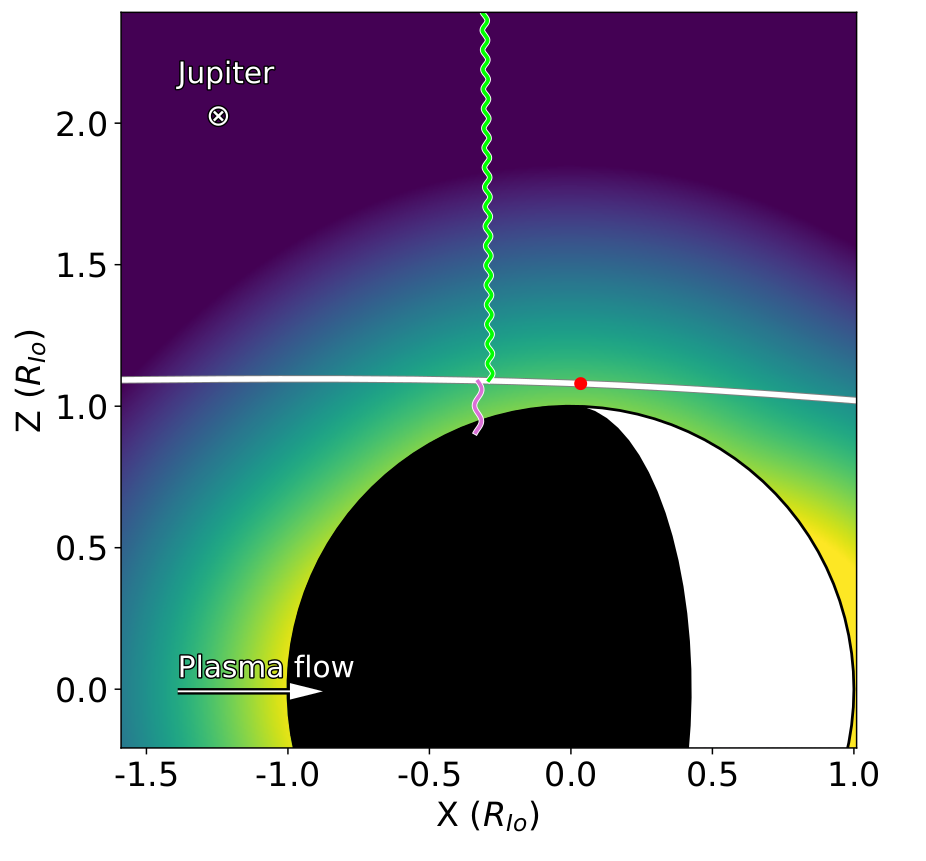MIST
Magnetosphere, Ionosphere and Solar-Terrestrial
Energetic Proton Losses Reveal Io's Extended and Longitudinally Asymmetrical Atmosphere
By Hans Huybrighs (Dublin Institute for Advanced Studies)
Io is a moon of Jupiter with active volcanoes and an atmosphere of which the structure and variability is poorly understood. A fascinating object on its own, neutral gas from Io also serves as the main source of plasma in Jupiter's magnetosphere. Improving our understanding of Io's atmosphere will allow us to better understand the precise link between Io's neutral environment and the plasma torus surrounding Jupiter. In this work we analyse data from the historic Galileo spacecraft that encountered Io. Specifically, we analyse regions close to Io where losses of energetic protons occur.
Using a comparison between the Galileo data and particle tracing model we find that charge exchange between the protons and Io's atmosphere along with the effect of the electric and magnetic fields can cause the measured decreases. We show that charge exchange with the atmosphere is either a major or the dominant cause of the losses, depending on the flyby altitude. The distributions of the proton loss region are related to the structure of Io’s atmosphere and hint at an atmosphere that is more extended on Io's day side (also the downstream side from the plasma flow's point of view), doesn't collapse fully on the night (upstream) side, and appears to be more extended than we assumed.

See publication for further information:
, , , , , & (2024). Energetic proton losses reveal Io's extended and longitudinally asymmetrical atmosphere. Journal of Geophysical Research: Space Physics, 129, e2023JA032371. https://doi.org/10.1029/2023JA032371